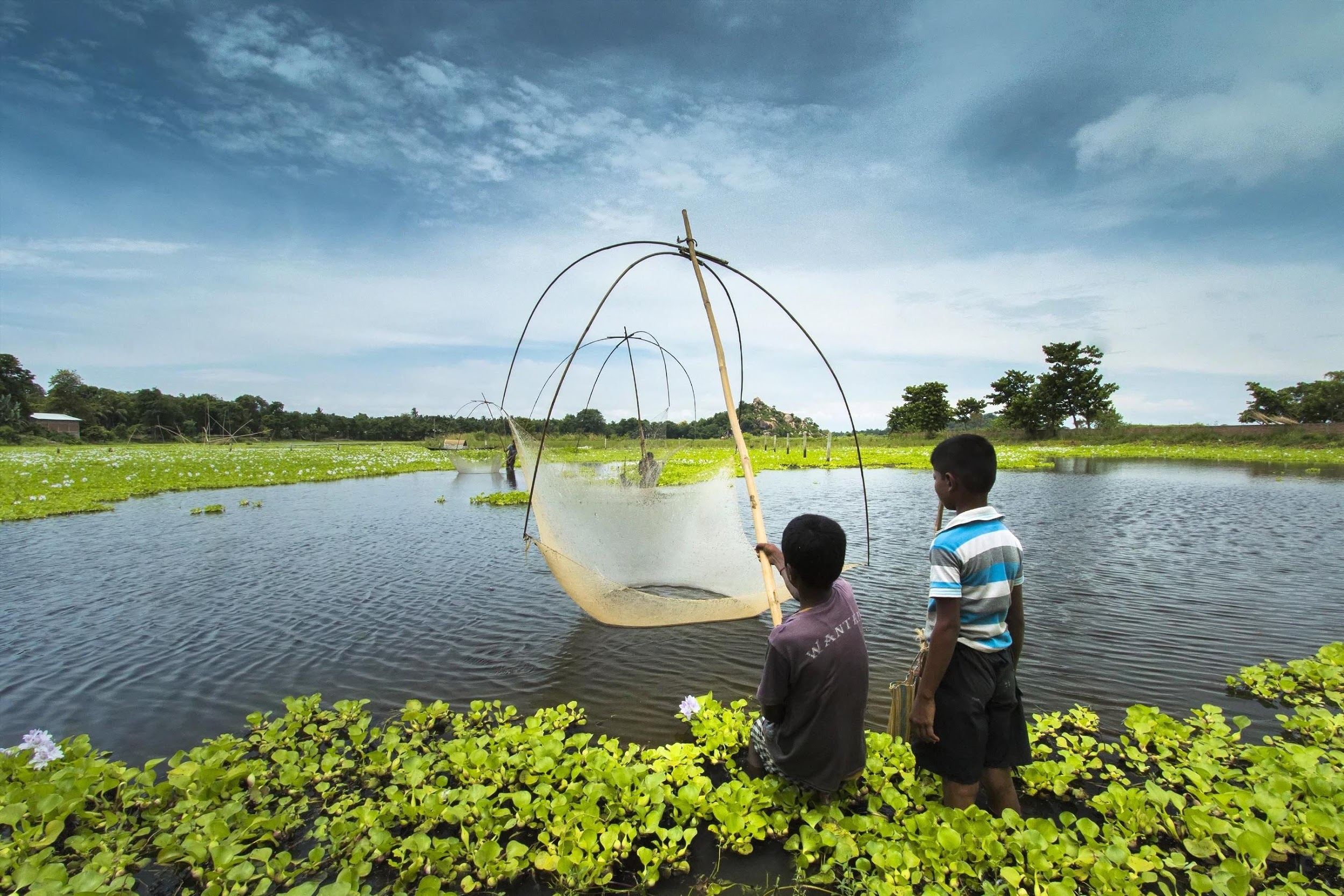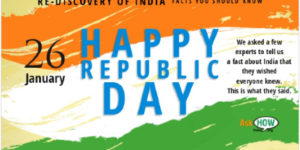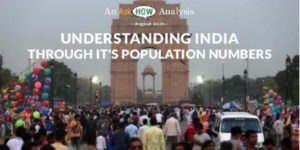Migration and political demography in Assamfeatured
This is the sixth post in a series on population in India. Each post can be read independently. The links for the first five posts are at the bottom of this one.
In my last post in this series on population in India, I showed that although the natual growth rates of Muslim population is higher than that of non Muslim population, there is nothing inherent in Islam that should keep it so. However, natural growth rates are not the only way the shares of population change. Big shifts can happen because of migration. Nowhere is this clearer than in Assam. The state has seen political conflict between ‘outsiders’ and locals for a long time now and the conflict has a religious element to it. In this post, I give a very brief migration history of the state, present some key facts and estimates and end with a few observations[1].

These rapid demographic changes are the reason for the National Register of Citizens (NRC) exercise in Assam. However, I would not be diving deeper into NRC.
Very brief demographic history of Assam
Assam was ruled by the Ahom dynasty for at least 400 years before it was conquered by the British in 1826[2]. The first significant migration into Assam was in the middle of the 19th century. Tribals from Southern Bihar moved to Assam to work in the tea plantations as the local Assamese did not want to leave their own farm lands. Bengali Hindus also came in to take up administrative positions. The 1900s saw an influx of Bengali Muslims who cleared forest areas and lowlands of Brahmaputra for agriculture. This influx continued through till independence and after.
There was a steady inflow of Bengali Muslims from East Pakistan (now Bangladesh) in the first two decades of independence. There was also migration from other states in India to Assam. In 1971, when the Pakistan army launched a vicious campaign against Bangladeshi nationalists, many citizens fled the country and came to India. A significant portion came to Assam and it is not clear how many went back.
Between 1950 and 1970s, the Assamese middle class was actually focused on keeping the Bengali Hindus out of middle class jobs, especially those in administration. They also wanted to make sure that the Assamese culture, especially the language, had primacy in the state. Winning elections was essential for this. The Bengali Muslims electorally supported the Assamese middle class as they were more interested in agriculture.
In 1979, the electoral rolls were revised and there was a sharp increase in the number of voters. The number of registered voters grew from 6.3 Million in 1972 to 8.7 Million in 1979, a 38% increase. This changed the attitude of Assamese Hindus towards Bengali Muslim migrants and led to widespread protests. The protests became violent. It is estimated that hundreds if not thousands of people were massacred in one particularly violent episode known as the Nelli Massacre.
Measures were taken to check illegal immigration after that but they were not very effective. In 1983 a new law for Assam called the Illegal Migrants (Determination by Tribunals) Act was passed. This Act defined foreigners as those who settled in Assam after March 25, 1971, the day Pakistan began its crackdown on Bangladeshi separatists. However, not many people were identified as foreigners under this Act as the burden of proof to show that someone was an illegal migrant fell on the denouncer. The Act was struck down for being unconstitutional in 2005. The National Register of Citizens for Assam was first created in 1951 but was not updated till recently.
In summary, non Assamese started entering the state in large numbers more than a century ago. After independence, many people entered the state from Bangladesh / East Pakistan and from other states in India. People of Assamese origin have been in political conflict with ‘outsiders’ for decades and there have been various political alliances in the history of the state.
I should note here that most immigrants probably worked very hard. For example, migrants who cultivated land cleared forests and lowlands which were never farmed before and this wouldn’t have been easy. Over the last century and a half, the migrants have contributed a lot to the economy of the state and the country.
How many ‘outsiders’ are there in Assam?
If we take the history of last one and a half centuries of Assam, there would be three broad types of migrations to the state. The first is the migration that happened before Independence when there were no international borders between Assam and rest of India including East Pakistan / Bangladesh. The second type of migration would be from West Bengal, Bihar and other parts of India after independence and the third would be from East Pakistan (Bangladesh). The children of all these migrants would be Assamese born but of different ethnic origin. Inter ethnic marriages complicate this issue further. Additionally, certain tribes in the state have their own distinct identity.
Only the third type of migration, i.e. migration from East Pakistan (Bangladesh) after independence, is actually illegal. But, politically the number of all migrants and their descendants is significant. This is because in India many people vote on the basis of their religious, ethnic or caste identities.
So how can you know the percentage of ‘outsiders’ in the state? Two proxies for people of non Assamese origins are language (mother tongue) and religion. One confounding factor is that Bengali Muslims used to mention Assamese as their mother tongue in surveys. This was especially true in the early decades after independence as Bengali Muslims and Assamese middle class were in a political alliance. In any case, the actual mother tongue of many children of migrants would be Assamese. The other confounding factor is that although it is likely that Muslim migrants were from East Pakistan / Bangladesh, it is not certain. They could be from Bihar or from other parts of India.
Given this background, it is natural that all estimates of ‘outsiders’ are vigorously contested. The typical technique is to compare the actual population (as counted in census) with what the population would have been on the basis of normal growth rates.
Myron Weiner compared the growth rates in Assam and rest of India for the first eight decades of the twentieth century.

As can be seen, the decadal population growth rates in the state have been much higher than that in the rest of the country. This suggests that the state has a very high proportion of migrants. According to Weiner, had the growth rate in Assam been the same as that in Rest of India, the population of the state would have been 9.5 Million rather than 19.9 Million in 1981. Even in the 9.5 Million population many would have descendants of migrants.
The share of Muslim population in Assam has steadily increased from 24% in 1971 to 34% in 2011[3]. Dr. Nandita Saikia of Jawaharlal Nehru University and of Professor Abdul Manan former professor of statistics at Gauhati University have very different explanations for the same.
Dr. Saikia asserts that significant migration has happened into Assam and it has been mainly from Bangladesh. Her calculations show that between 1951 and 2001, the number of migrants from East Pakistan (Bangladesh) and their descendants is 4.2 Million and 90% of them are of East Pakistan / Bangladeshi origin. These migrants since Independence formed nearly 16% of the population of the state in 2001.
Professor Mannan believes that the increase in share of Muslims in the Assamese populaiton is almost entirely due to higher fertility of Muslim women and due to the prevelance of child marriage in the community. Furthermore, he argues that the availability of land has been very limited in Assam for decades now and it does not make sense for Bangladeshis to come to Assam anymore.
I should note here these estimates of outsiders including those for illegal immigrants are only of the gross number of immigrants. It does not actually identify the individual outsiders.
Summary and Observations
- Assam has seen a very sharp increase in the proportion of non native Assamese over the last century or so.
- People vote based on their identities – these could be cast, religion or ethnic origin. When shares of population change very quickly, it is understandable that the local population gets anxious.
- It is very difficult to identify illegal immigrants in Assam. People of non Assamese origin could be from the rest of India or could be descendants of people who migrated a long time ago. There are estimates of number of outsiders but these estimates are vigorously contested.
In summary, on the one hand there are anxieties of people of Assamese origin who are no longer a majority in the state. On the other hand are migrants who probably worked hard to make the state their home. Additionally, it is very difficult to figure out if they are there legally or illegally. So what do we do?
I don’t know. Balancing legitimate yet competing concerns is the main job of politicians. Not mine.
Author –
Yogesh Upadhyaya
(Yogesh Upadhyaya is one of the founders of AskHow India. Blogs are personal views.)
You can follow AskHow India (@AskHowIndia) or me (@Uppi89) on twitter or me on LinkedIn
This is the sixth in a series on population. The first five articles can be found here
- Everything you wanted to know about population (but were too lazy to Google).
- Are the Acche Din of population growth already here?
- Chhath — the new national festival?
- Economic migration in India — The Who, the Why and other good stuff.
- Islam and population growth in India.
[1] It is very ambitious of me to present the complex history of the state in a small blog post. I am sure I will make mistakes. Moreover, this topic is so politicised that difference of opinions are guaranteed. Feel free to comment and point out my mistakes as well as present alternate points of view.
[2] My understanding of the history of the state are from two sources. The book India Moving and The article ‘Political Demography of Assam’s Anti Immigrant Movement’ by Myron Weiner. As is normal, mistakes in understanding are mine. Please go to the original sources to see what those authors actually wrote.
[3] India Moving



